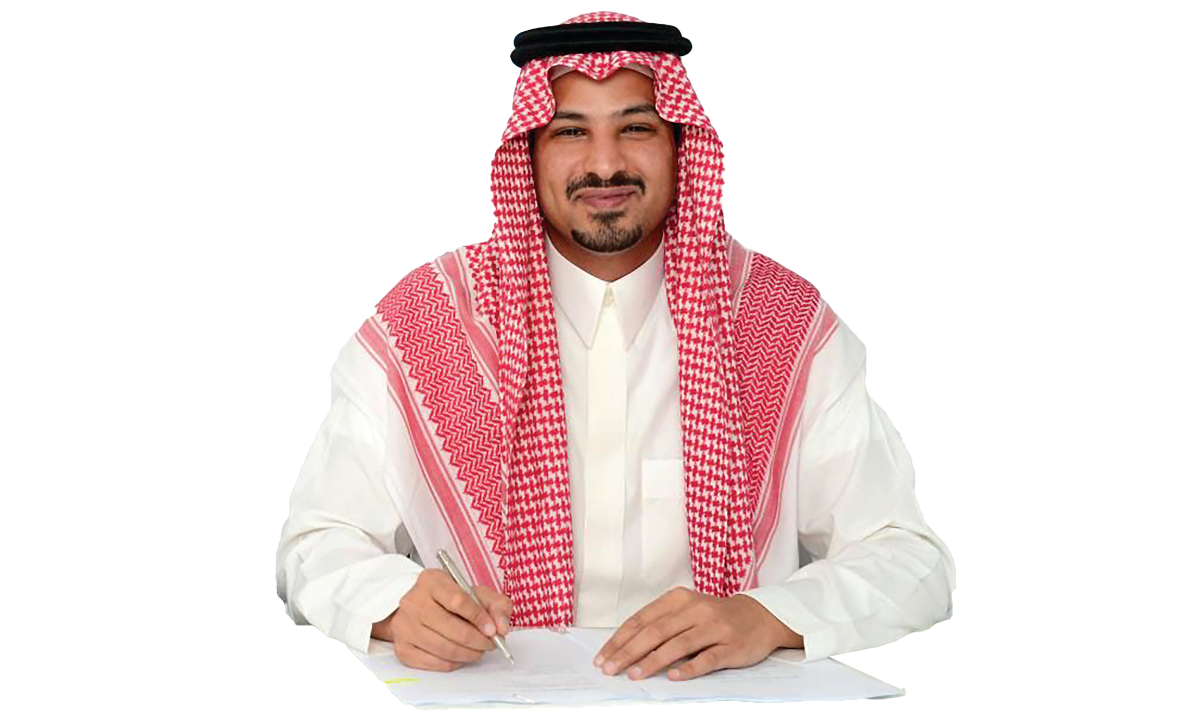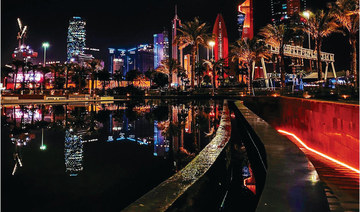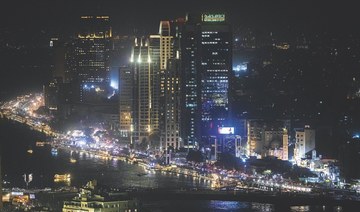CAIRO: Saudi Arabia’s entrepreneurial landscape is bustling with innovation, as startups across the Kingdom are leading a digital revolution in various sectors.
Among these, the healthcare industry stands out as a primary focus, with a significant influx of technology firms dedicated to enhancing the sector’s efficiency and accessibility.
In an interview with Arab News, Prince Mohammed Al-Faisal, CEO and co-founder of the Saudi-based healthtech startup Clinicy, outlined the company’s ambitious goal to expand sevenfold by the end of 2024.
“We have just celebrated a significant milestone, having now served 1 million patients and managed more than 700,000 appointments. Currently, our market share is at around 1 percent, but in 2024 we want to expand our presence and capture 7 percent by the close of the year. We have a strong core customer base and an exciting pipeline of opportunities,” Al-Faisal said.
After successfully raising $5 million in a series A funding round, the company has set its goals for complete expansion.
A healthy market
Al-Faisal highlighted the extensive opportunities available in the Kingdom, noting that the company’s objectives are in harmony with national initiatives.
“In line with Saudi Vision 2030 and in collaboration with the Ministry of Health, we are bringing about digital reform to the healthcare sector,” he said.
“One of the main goals that we are aligned with is creating digital accessibility and efficiency of healthcare services. What we have found is that there is a strong commitment at the governmental but also at the institutional and even single clinic level, to drive positive outcomes for patients,” added the CEO.
“Working together with these stakeholders, Clinicy is taking incremental steps to transform the Kingdom’s healthcare. This combination of innovation and collaboration is the key to success,” he stated.
Al-Faisal pointed out that Saudi Arabia is undergoing a significant transformation across various sectors, with healthtech being recognized as a key area of opportunity by both regional and international investors. Highlighting the financial commitment to this vision, Al-Faisal mentioned that SR214 billion ($57 billion) has been allocated for health and social development in the 2024 budget.
“This allocation underscores the government’s dedication to investing in the healthcare sector and underscores the importance of innovative healthtech companies like Clinicy in supporting the sector’s growth,” he explained.
Curing challenges
Al-Faisal explained that Clinicy is strategically positioned to tackle the challenges faced by Saudi Arabia’s healthcare sector, which currently boasts a technology market valued at over SR7.2 billion – a figure that continues to increase annually.
Clinicy’s proprietary platform encompasses a comprehensive suite of products designed for medical institutions, including a Software-as-a-Service Health Information System, Health Management Information System, Revenue Cycle Management, and Client Relationship Management.
Additionally, Clinicy incorporates a thorough invoicing process that fully adheres to Zakat, Tax and Customs Authority standards.
Furthermore, Al-Faisal announced that his company plans to expand its services in 2024 by introducing additional business to customer offerings aimed at enhancing patient experiences.
Al-Faisal responded to inquiries about the evolving challenges within the healthcare sector, notably reflecting on the COVID-19 pandemic’s impact.

In line with Saudi Vision 2030 and in collaboration with the Ministry of Health, we are bringing about digital reform to the healthcare sector.
Prince Mohammed Al-Faisal, CEO and co-founder of Clinicy
“One of the big learnings from this was the need for digital services that could alleviate the pressures on the healthcare system – our growth over the past few years has in many ways been driven by a renewed commitment from healthcare providers to upgrade and adapt their technology,” he explained.
Al-Faisal emphasized the importance of closely collaborating with on-the-ground partners to deeply understand their needs and identify solutions that can make a substantial difference in a healthcare setting.
He remarked on the pivotal role of technology in either simplifying or complicating operations, stressing that each update to the Clinicy platform aims to introduce enhanced simplicity and deliver tangible benefits for healthcare providers and their patients.
Al-Faisal pointed out that the Saudi healthcare sector incurs losses exceeding SR3 billion annually due to missed appointments and administrative inefficiencies.
“Clinicy directly reduces the high rates of no-shows, with clinics who use our platform seeing an average 55 percent reduction in missed appointments. Certain institutions have even seen an 85 percent drop in no-shows,” he added. On the administrative front, Clinicy aims to lower communication barriers between providers and patients through cost-effective automation.
Al-Faisal noted that approximately 70 percent of employee tasks, such as service reminders and updating appointment timings, could be enhanced and automated.
Medical centers that have adopted Clinicy have seen a reduction in the hours dedicated to manual administration by an average of 40 percent, and in some instances, this reduction has reached 60 percent, Al-Faisal noted.
“One game-changing area is the synchronization of data into unified systems and devices. From patient records to payments, data can be used to understand macro-scale issues in healthcare administration, to enabling individual, personalized experiences,” Al-Faisal explained.
Business fundamentals
“Currently, our main source of revenue is through our subscription-based partnerships with medical institutions. In 2024, we will diversify our revenue to provide more direct B2C services,” he stated.
The company claims to have reached gross profitability and will achieve net profit by 2025 with the current focus being on expansion.
“In 2024, we are concentrating on expanding our rollout and acquisition in the Kingdom, as the domestic opportunity is vast,” Al-Faisal explained.
FASTFACT
Saudi Arabia is undergoing a significant transformation across various sectors, with healthtech being recognized as a key area of opportunity by both regional and international investors.
“In the longer term, as a technology provider these tailored solutions could potentially benefit many millions in accessing better healthcare options. Globally, healthcare remains out of reach for a lot of the world’s population and I envision a time in the future where Clinicy is supporting people on every continent,” he added.
Al-Faisal emphasized the importance of deeply understanding customer needs as a cornerstone of Clinicy’s approach.
He acknowledged the constant emergence of new trends and technologies in the healthcare sector. However, he highlighted that his company’s distinctive advantage lies in its capacity to seamlessly integrate these innovations into the daily operations of healthcare institutions.
“We already deploy a range of advanced artificial intelligence and machine learning tools across Clinicy functions. It is clear that there are many use cases for AI and ML and where appropriate, we will continue to incorporate advancements into our proprietary platform,” he stated.
“One of the biggest challenges has been moving a traditional offline model online. However, this is also one of the most satisfying accomplishments,” Al-Faisal highlighted.
“We all understand how businesses like Amazon and noon have transformed the way people shop online, and how our banking services have migrated to mobiles. With Clinicy, we are providing something just as transformational with enhanced technology for healthcare, from the institution through to the individual patient,” he said.
























